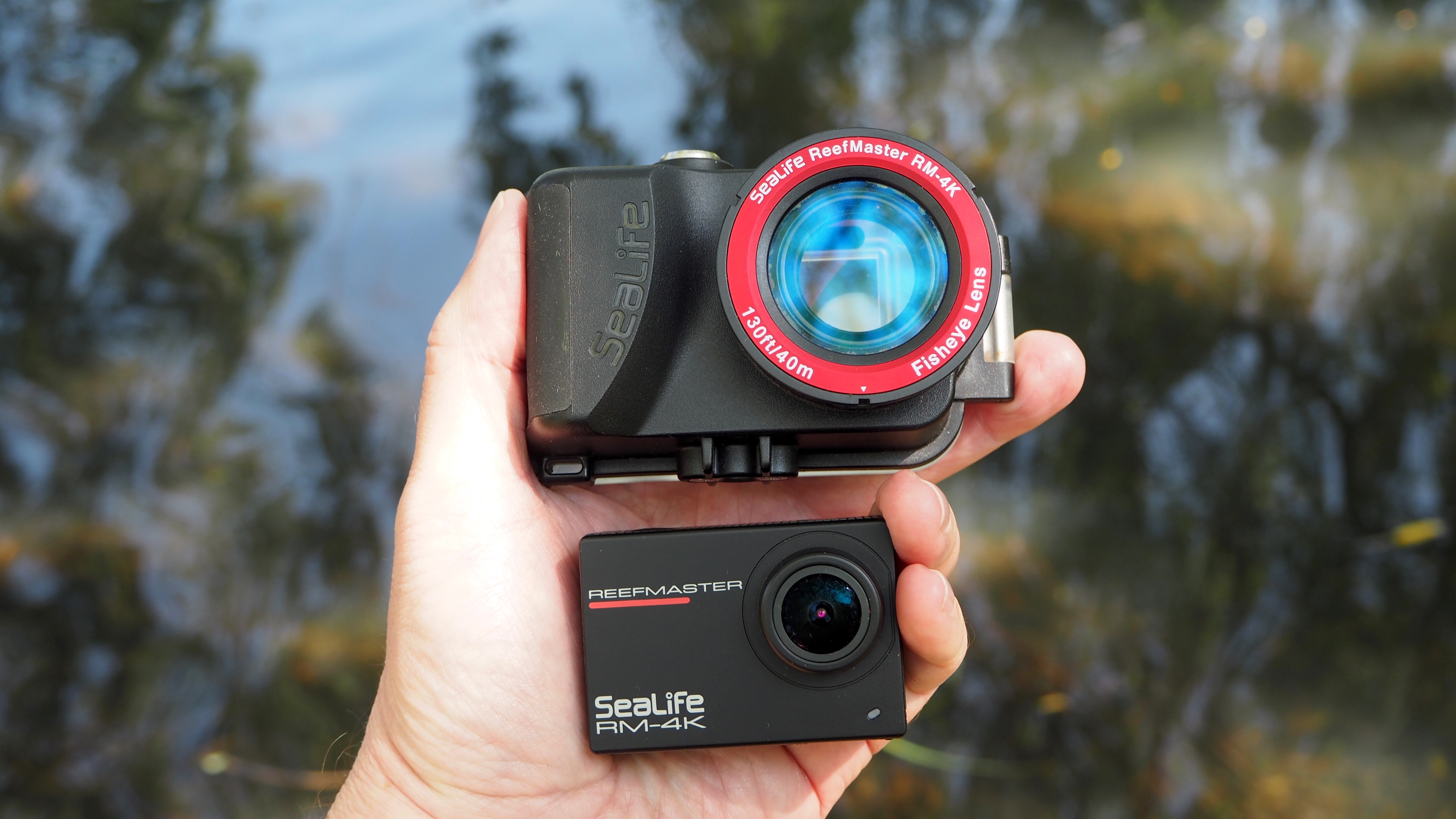
These days I don’t always need bulky and expensive camera housing to be able to shoot more than passable quality stills and video underwater. In the last ten to 15 years there’s been a handful of rugged consumer-targeted compact digital cameras that can be used for going snorkeling with. These can then be run under the tap to clean if they get covered in sand or grit. I just need to make sure the rubber-sealed latch prevents water ingress to the memory card and the battery compartment is clamped tightly shut before entering the sea or swimming pool.
Unlike such standalone examples, however, the SeaLife ReefMaster RM-4K comprises two components. Yes, it’s a compact camera – very compact in fact, as the camera component is no bigger than a matchbox and fits snugly in the palm of my hand. But the camera needs to be secured within an external plastic housing, here simply fastened into place and made watertight via a hand-turned chunky plastic cog. The rear of the housing is translucent, so I can view the camera’s back screen to aid composition, while there’s a clear circular window provided for the lens at the front. Fittingly enough, given the camera’s intended use, this 14mm equivalent lens gives us a wide-angle ‘fisheye’ lens, the effect getting noticeably more pronounced the closer I'm shooting to a subject.
Inevitably, since this is a specialist tool, I'm paying a premium over a non-waterproof point-and-shoot digital compact. That’s if I'd able to find one in an era in which the smartphone has largely killed off non-ruggedized examples, though demand on the secondhand market is reportedly building.
Needing to be set against such pricing is always the fact that this specialist setup will let us capture images that would not ordinarily be possible. Ultimately then, does the SeaLife ReefMaster RM-4K offer depth-defying qualities worth paying that little bit extra for? Read on to find out…

SeaLife ReefMaster RM-4K: Specifications
SeaLife ReefMaster RM-4K: Key Features
The SeaLife ReefMaster RM-4K arrives out of the box with its necessary standalone housing and a USB cable, one end of which is attached to the camera to charge its internal battery, while the other slots into a standard smartphone mains adapter plug. Also in the box is a pair of soft drawstring pouches, presumably to protect the camera and housing when carrying them around unboxed.
Key features of the camera itself include a 14MP CMOS sensor which I'm told has been sourced from Panasonic, providing the ability to capture JPEG stills plus the ability to shoot video clips at 4K resolution up to a standard 30fps or slightly lower resolution 1080P HD video at up to 60fps. At the front is a 140° fisheye lens, equivalent to an ultra-wide 14mm in 35mm terms. Delve into the shooting menu on the camera and this range can be adjusted to an ultra-wide 156° equivalent or narrowed to a 100° equivalent. The advantage here is I can close to a sea-dwelling subject and still be able to fit it all into frame, or simply kick back and take in the wide-angle view. With the focus completely automatic, any subject from 30cm to infinity should be sharply rendered. Color correction modes are also built-in, compensating for either shallow or deeper water, while of course it can also be used as a regular camera on the surface during daylight.
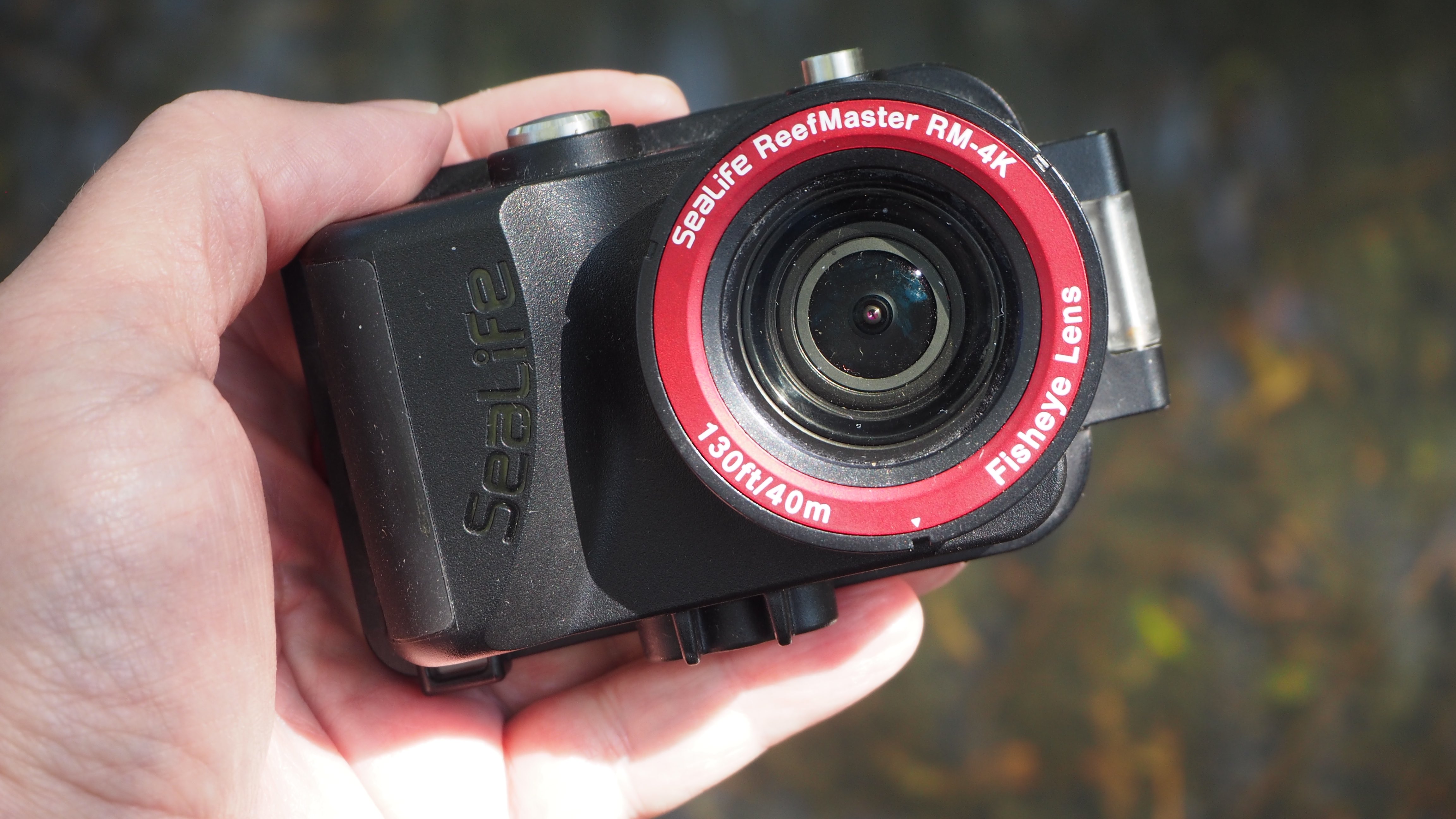
While the tiny camera component finds room for a slot for a removable microSD card of up to 128GB capacity, as well as further slots for a USB lead and HMDI cable, there is an additional ability to share pictures and videos wirelessly if downloading a SeaLife ReefMaster app and thus pairing my smartphone or tablet with the device.
There’s no room on the tiny camera back to squeeze on anything better than a 2-inch, 230K-resolution color LCD screen, the kind of specification best described as adequate rather than desirable. Once charged I'm told the camera’s battery is good for over two hours of video or 500+ still images, which is more impressive, given its diminutive nature.
A small size does have other advantages, however. Even when it’s sitting in the provided underwater housing the setup here is unbelievably lightweight at 202g, so there’s no chance of feeling weighed down or compromised by a bulky or weighty camera when in the water.
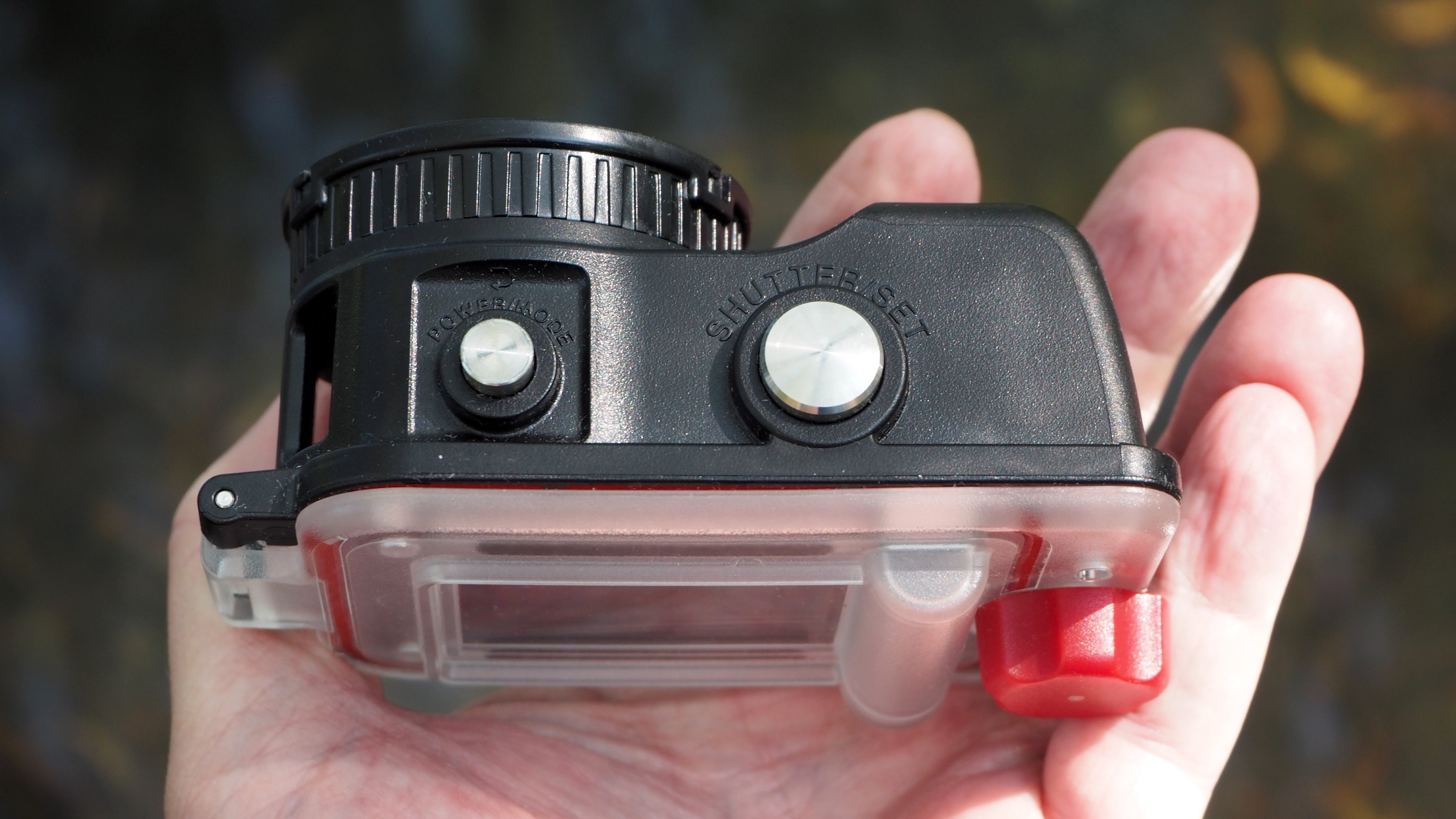
Like other models in its manufacturer’s range such as the SeaLife Micro 3.0, I can add an optional accessory in the 2000 lumens SeaLife ‘Sea Dragon’ external LED light if I really want to get more serious with my image taking, though this does nearly double the price of the overall set up.
The external underwater housing provided for the tiny camera component not only maintains visibility for the user when screwed on tightly but also provides access to the camera’s four function buttons via larger external metal ones that require a definite press and a degree of pressure exerted to operate. This means I'm less likely to accidentally fire off a shot or swap functions just in the process of handling the camera. Surprisingly perhaps, as this device is designed for use in the water, a screw thread for a tripod is provided at the base of the housing. On the camera itself, the base of the unit is where the battery is stored.
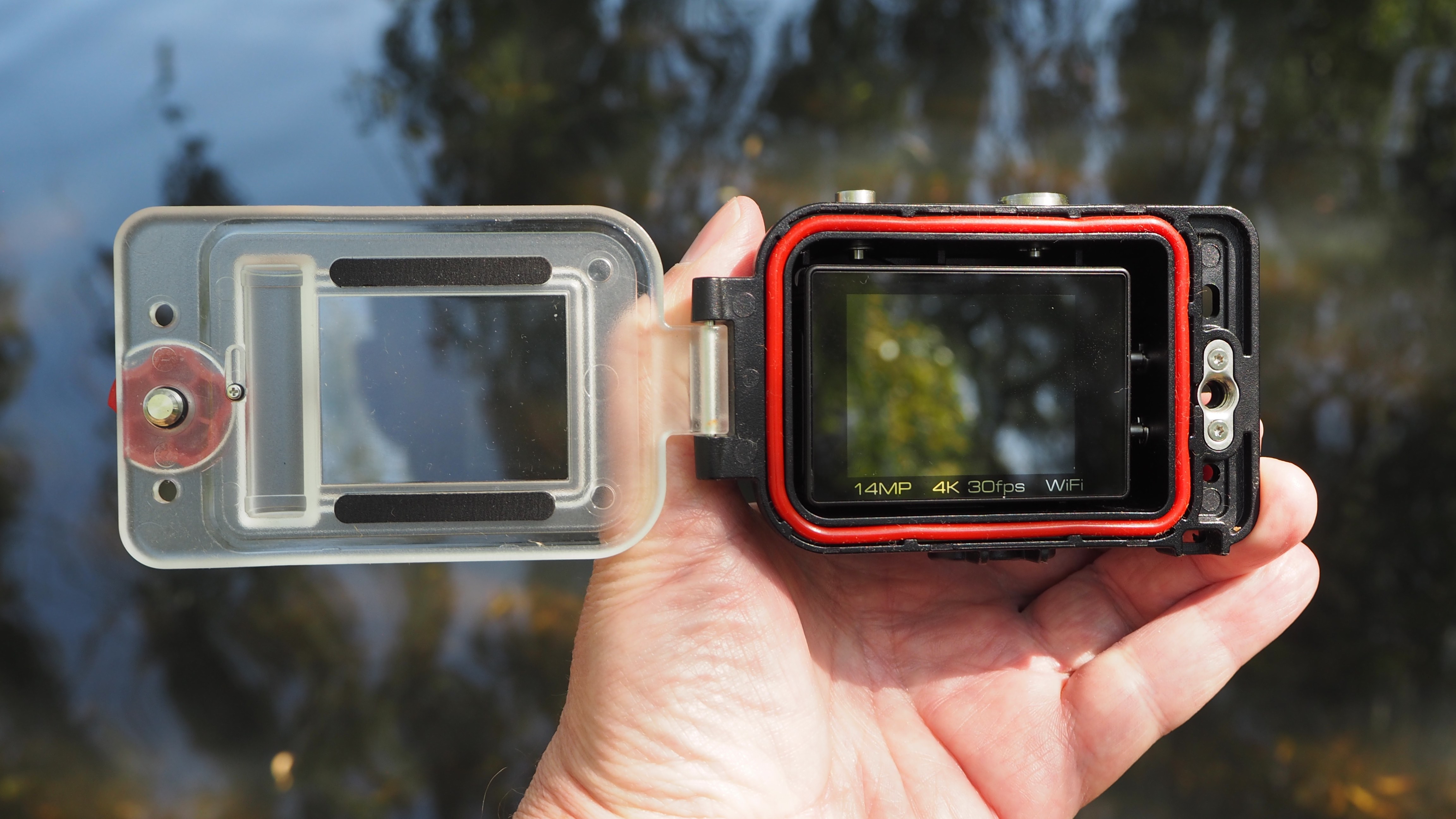
SeaLife ReefMaster RM-4K: Design & Handling
On the SeaLife ReefMaster RM-4K, once the camera mode I want has been selected via the large power/mode button – helpfully the function of the button is carried through to and marked on the outer housing, just as it is on the camera unit that fits snugly inside – in terms of handling, form, and function, the operation is pretty much point and shoot all the way. Expectedly, the fixed focus lens camera determines focus and exposure by itself. This is as it should be. I want to be observing where I'm swimming and what’s around us more than what the camera itself is doing.

For the same reason, it will pay to familiarise myself with its admittedly fairly rudimentary features before embarking on any snorkel or dive. The LCD back screen is bright and allows us to broadly and competently frame my shot. If I have a gripe it’s that the LCD’s small 2-inch size and low-ish by current standards 230K dot resolution don’t let us observe much in the way of critical detail, either before squeezing the shutter release or subsequently reviewing the shot on the same screen. So it’s a case of point, shoot, and hope for a successful outcome.
Despite the toy-like looks, the housing does feel reasonably robust and like it would withstand the odd accidental knock or drop – officially it’s shock-proofed against a dry-land fall from a meter in height. Helpfully there is a loop to one side through which to feed a strap should I want to (advisedly) attach it to my wrist while in the water.
There’s not much of a grip on the underwater housing that envelops the inner camera, but what’s there is a rubberized strip to aid purchase for wet fingers. Also aiding use in the wet, there’s a space to the right of the screen when the camera is set within its housing to stash a vial of moisture absorbing ‘Moisture Muncher’ crystals, said to prevent fogging.
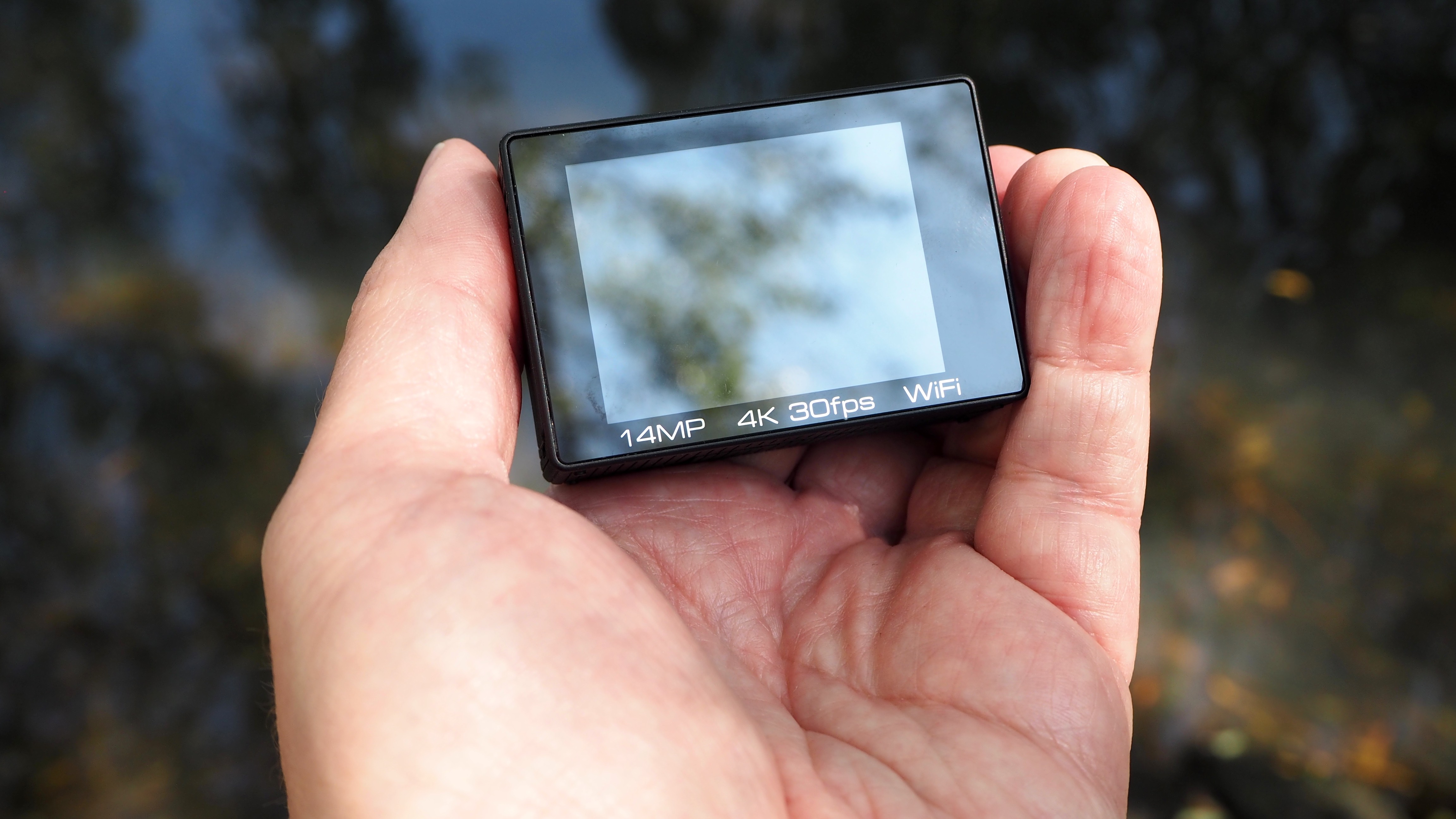
SeaLife ReefMaster RM-4K: Performance
Pressing the power/mode button not only activates the SeaLife ReefMaster RM-4K, allowing us to be ready to shoot within three seconds or so, with a 0.3-second shutter lag, but also once the camera is on affords the selection of a handful of shooting or review modes. Tabbing from left to right, using large and cartoonish on-screen icons as my guide, I can jump between stills and video settings, separate video and stills playback modes, and the settings menu, denoted by the familiar cog icon. There are only four buttons on the device, which feels about right.
Once I’d familiarised myself with what they provide access to, it means I can concentrate more fully on the task at hand. Turning the camera off involves holding down the power button for a couple of seconds until the screen goes blank. There is an operational indicator lamp on the camera itself, but this is hidden once it’s placed within the housing, meaning the back screen gets my full attention.
In terms of image quality, here a 14-megapixel stills resolution produces broadly a 5MB file size. Get within a few feet of your subject and the image on screen displays the familiar, expected fisheye-like distortion, but in a way that’s perfect for the intended subject matter.
Because the waterproof housing requires the user to screw it tightly in place, there is some potential here for user error and potential leaks. Ideally, we’d have preferred the belt and braces of clamps/ lever locks just to make doubly sure everything is reassuringly watertight from the off.
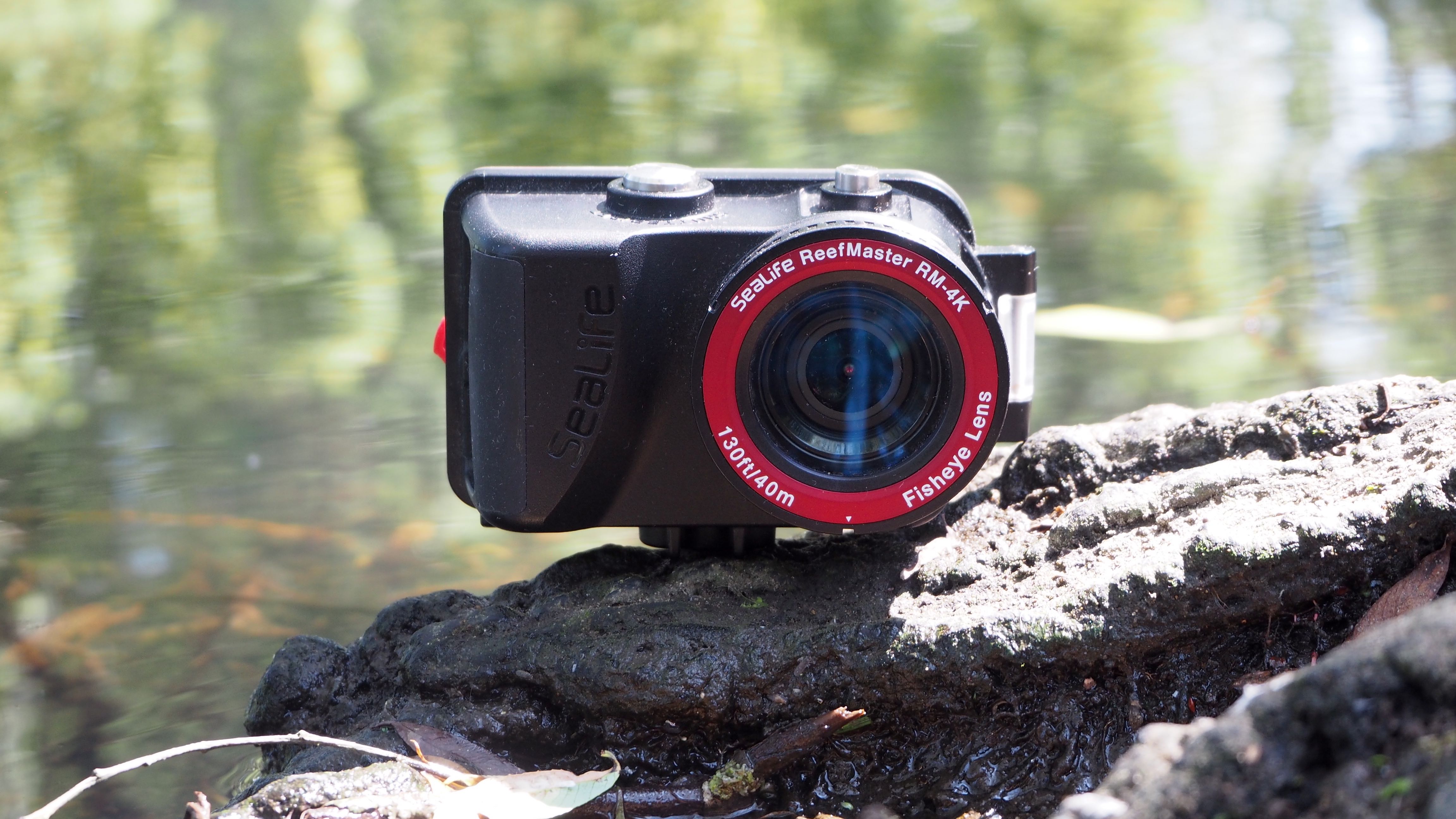
SeaLife ReefMaster RM-4K: Verdict
Seeking an underwater digital camera setup but afraid of the perceived bulk, complexity, and price that might entail? Worry not; the SeaLife ReefMaster RM-4K is a stress-free starter option that, while priced at a premium compared with a standard non-waterproof point-and-shoot digital camera, won’t break the bank. Incredibly compact and lightweight with it, this one won’t get in the way of a snorkel or dive. Make doubly sure the housing’s back is screwed on water-tight, attach it to your wrist and you’ll barely be conscious of the camera until you need to bring it into action for capturing a watery keepsake.
Alternatives
The most obvious alternative to what I'm offered here is the same manufacturer’s SeaLife Micro 3.0, as mentioned above. That compact camera, reviewed by us back in 2022, is suitable for use at even deeper depths of up to 60m, offers 4K video resolution with capture speed up to a maximum of 120fps, and boasts a slightly better 16-megapixel stills resolution with it. Unlike that camera, however, the SeaLife ReefMaster RM-4K features the ability to shoot to removable storage media, here a microSD card.
Further alternatives to check out from rival manufacturers include the 5x optical zoom, 16 megapixel Nikon Coolpix W300, waterproof to 30 meters, and is a catch-all for those who want a point-and-shoot camera for scenarios in which you wouldn’t otherwise risk it. This model however is long in the tooth at the time of writing.
A better idea perhaps is to investigate the ‘TG’ series of compacts under the Olympus brand, such as its TG-6 or Olympus TG-7. Or, alternatively Ricoh’s similarly numbered, all-weather WG-7 or Ricoh WG-80. Once more these waterproofed and shock-proofed point-and-shoots, with small-ish 1/2.3-inch sensors cost a premium compared with non-toughened, general-use compacts that cannot be splashed about within the water.
As ever, it appears that the deeper we want to swim with my camera, the deeper I’ll need to dig into my pockets.







